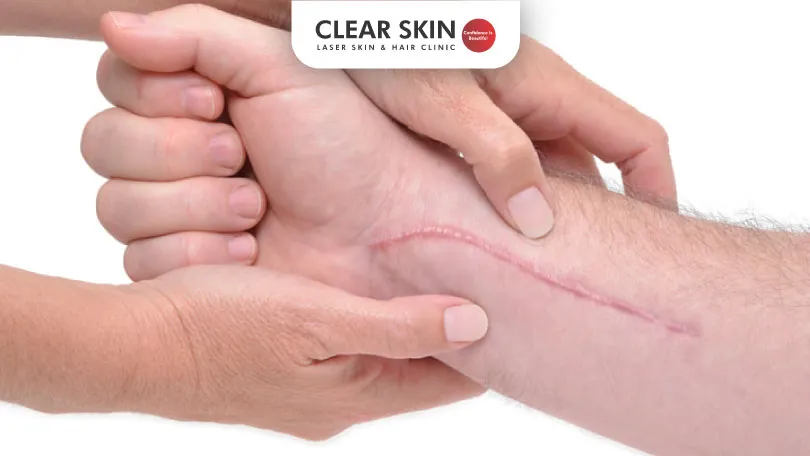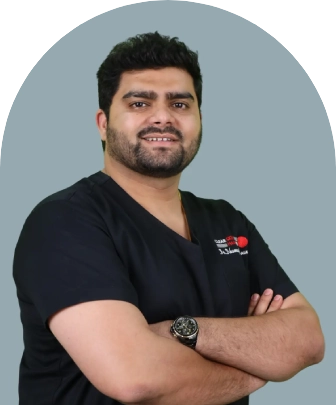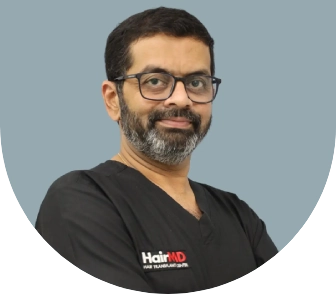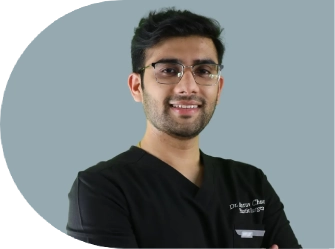Difference Between Keloid and Hypertrophic Scar!
Reviewed By: Dr. Dhanraj Chavan
Updated on: 7th June, 2023

The first record of keloid scars dates back to 1700 BCE Egypt with relation to surgical techniques. The term cheloide, derived from the Greek word chele, meaning crab’s claw, was adopted by Alibert to describe the lateral growth of tissue into unaffected skin that is now termed keloid.
A hypertrophic scar is a raised, thickened area of skin that forms at the site of a wound. Unlike keloids, hypertrophic scars remain within the boundaries of the original wound and may improve over time. They are caused by an overproduction of collagen during the healing process.
Table Of Content
- What are the Keloid Scars?
- What are Hypertrophic Scars? What Causes Their Formation?
- Treatment and Prevention
- Triggers and Causes of Keloid and Hypertrophic Scars
- Conclusion
What are the Keloid Scars?
- These are firm, smooth and dense spontaneous overgrowths of fibrous tissue that form on a healed wound. Keloid scars radiate from the original spot. They do not spontaneously subside and might arise even after excision.
- Forming soon or long after a wound, keloids can get very uncomfortable and itchy and extend beyond the boundaries of the healed wound.
Range of Susceptibility
- Our upper chest and shoulders are left especially vulnerable and dark-skinned people are more susceptible to keloid scarring, in comparison to Caucasian human beings.
- Generally, humans never form keloids. However, some develop them after minor injuries, burns, insect bites and acne spots.
How Do They Form?
What are Hypertrophic Scars? What Causes Their Formation?
- Hypertrophic scars are produced through any cases of abnormality during the healing process, this especially occurs when the deep dermis is affected by burns.
- Tension on a healing wound causes a hypertrophic scar. A thick layer of skin is formed. In a typical wound, the equilibrium stage is reached thanks to anabolic and catabolic processes approximately 6-8 weeks after the original injury.
- At this stage, the wounded skin’s strength is reduced to 30-40% of the strength of the healthy skin. The elastic strength of the scar improves over time as a result of progressive cross-linking of collagen fibers.
- The scar is usually hyperemic and it can possibly thicken at this stage. However, it tends to subside over a period of time. The scar is elevated above the skin and remains hyperemic
Permanency and Curability
- Over time or with treatment, hypertrophic scars subside.
- In contrast, keloids have the ability to persist and are possibly resistant to treatment.
- Hypertrophic scars are much easier to treat than keloid scars.
Characteristics of Keloids: An Indication of Risk Factors
- Keloids are found in humans only, especially those aged between 10-20 years. They are present in both dominant and recessive modes of inheritance. However, Newborns and old people rarely face them.
- Polynesian and Chinese people face a higher threat when compared to Indian and Malaysian persons. As many as 16% of people in a random sampling of black Africans reported having keloids. White people are barely confirmed.
- Young females are more susceptible to keloids over young males, possibly due to a higher frequency of piercings. Keloids and hypertrophic scars affect both sexes equally in other age groups.
- Onset occurs most commonly in individuals aged 10-30 years. Although an increasing number of presternal keloids have formed due to coronary artery bypass operations and other similar procedures conducted on persons belonging to older age groups.
- Most keloids are round, oval, or oblong with regular margins; however, some have crab claw-like configurations with irregular borders.
- The consistency of keloids varies from soft and doughy to rubbery and hard. This is a huge contributing factor when identifying a keloid.
- Keloids are harmless to general health and do not change into skin cancers.
- Early lesions are erythematous, meaning they’re red due to local congestion of the skin.
- Aged lesions become brownish red and then pale as they age.
- Lesions are usually devoid of hair follicles and other functioning adnexal glands.
- From weeks to months to years, keloids generally grow slow.
- Occasionally, keloids enlarge rapidly, increasing threefold in size within months.
- Once they stop growing, keloids do not usually cause symptoms and become dormant.
- Keloids escape the boundaries of the healed wound but rarely extend into the subcutaneous tissue which lies below.
On Varying Body Parts
- Keloids on the ears, neck, and abdomen tend to grow from peduncles.
- Keloids on the central chest are raised and flat scars becoming narrower as they reach the top.
- Keloids overlying a joint can contract and restrict movement.
- Most patients face 1 or 2 keloids. Infrequently, patients with spontaneous keloids have multiple lesions, as do patients who develop keloids subsequent to chicken pox or acne spots.
Characteristics of Hypertrophic Scars
- Hypertrophic scars are characterized by erythematous, pruritic, raised fibrous lesions.
- They usually do not radiate beyond the boundaries of the original injury and may possibly undergo partial spontaneous reduction.
- Regression takes place within 12-24 months but it may not necessarily be complete.
- The scar subsides over a period of time until a flat, pale, flexible scar has developed. When an imbalance occurs between the anabolic and catabolic phases of the healing process, more collagen is produced than is broken down and radial growth occurs.
- The scar is elevated above the skin and remains hyperemic.
Treatment and Prevention
- Occlusive Dressings
- Compression therapy
- Intralesional corticosteroid injections
- Cryosurgery; for keloids that are small and on the lightly pigmented skin, most suitable and is often used parallel to cortisone injections.
- Radiation therapy carried out soon after surgery
- Laser therapy; very good at improving skin texture and color, but doesn’t always flatten out the keloid
- Interferon (IFN) therapy, 5-fluorouracil (5-FU), doxorubicin, bleomycin, verapamil, retinoic acid, imiquimod 5% cream, tamoxifen, tacrolimus, botulinum toxin, hydrogel scaffold
- Over-the-counter treatments (eg, onion extract; a combination of hydrocortisone, silicon, and vitamin E).
Other Promising Therapies Include
- Antiangiogenic factors, including vascular endothelial growth factor (VEGF) inhibitors (eg, bevacizumab), phototherapy (photodynamic therapy [PDT], UVA-1 therapy, narrowband UVB therapy), transforming growth factor (TGF)–beta inhibitors, tumor necrosis factor (TNF)–alpha inhibitors (etanercept), recombinant human epidermal growth factor (rhEGF), and recombinant human interleukin (rhIL)–10, which are directed at decreasing collagen synthesis.
- Emollients (creams and oils)
- Polyurethane or silicone scar reduction patches
- Oral or topical tranilast (an inhibitor of collagen synthesis)
- Surgical excision (but in keloids, excision may result in a new keloid even larger than the original one)
- Skin Needling
Scar dressings should be worn for 12 to 24 hours per day, for at least 8 to 12 weeks. This can be extended as per requirement.
Going in-depth into the best treatments available, injecting long-acting cortisone (steroid) into the keloid once a month, is the most effective first-hand treatment. After several injections with cortisone, the keloid subsides dramatically but not completely within 3 – 6 months but tends to recur over a period of time. However, hypertrophic scars often respond completely.
Triggers and Causes of Keloid and Hypertrophic Scars
As soon as the skin is wounded the healing process is initiated. The formation of fibroblasts and skin cells lays the foundation of the healing process. A framework of fibroblasts is filled with skin cells which seal the wound. However, unfavorable circumstances cause the formation of keloids and hypertrophic scars.
Triggers
- The increased prevalence of keloids along with increased cutaneous pigmentation suggests a genetic linkage.
- Physical trauma to the skin due to piercings and surgery;
- Pathological trauma to the skin due to acne and chickenpox is the primary cause of keloids.
- Foreign material, infection, hematoma, or increased skin tension can also lead to keloid or hypertrophic scar formation in susceptible individuals.
- Transforming growth factor-beta and adiponectin are indicated in the pathogenesis.
Keloid scars grow beyond the portion of the original lesion or cut. They are an itchy and heightened group of scar tissue. These elevated scars are abnormal in shape. If left untreated, they can get worse in appearance and are often painful. They vary in colour from, pink to cherry red. In terms of a histological perspective, this type of scar is composed of substantial and copious collagen clusters which create lumps deep inside the scar.
After the healing process, a hypertrophic scar can originate from the overproduction of collagen substances inside the body. The excessive creation of collagen substances can lead to an elevated scar akin to a keloid scar. Nevertheless, a hypertrophic scar does not develop beyond the boundaries of the original wound unlike a keloid does.
Hypertrophic and keloid scars grow as an outcome of a rapid increase of the dermal tissues after any form of skin injury. Keloids can grow after 5 to 15% of wounds have healed.
Do You Know?
Roughly 250 Patients Are Treated
Everyday By These Dermatologists
(You are one click away from flawless skin)
Meet Our Dermatologist!
Conclusion
In conclusion, understanding the differences between keloid and hypertrophic scars is essential for proper treatment and prevention. While both are caused by excess collagen production, keloids grow beyond the wound’s original boundaries, whereas hypertrophic scars stay within them. Recognizing these distinctions can help in choosing the right treatment approach and managing these types of scars effectively. Visit Clear Skin clinic to know more.
Further Reading
How to Avoid Acne in Monsoons?
Avoid acne in monsoons with a gentle skincare routine, diet tips, and hydration. Get expert advice to manage breakouts and keep your skin clear and healthy.
Does Makeup Cause Acne-Prone Skin?
Worried about breakouts from using makeup? Does makeup cause acne for you? Learn the safe ways to apply makeup for acne-prone skin.
Morning Skin Care Routine for Glowing Skin
Clear Skin Clinic, led by top dermatologists, shares the ideal morning skincare routine to help you achieve a radiant complexion naturally and effectively.
Monsoon Skin Care Tips for Radiant, Healthy Skin
Clear Skin Clinic, led by top dermatologists, shares the ideal morning skincare routine to help you achieve a radiant complexion naturally and effectively.
Have thoughts? Please let us know
We are committed not only to treating you, but also educating you.





